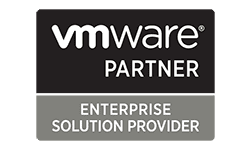The Top 6 Enterprise Application Development Challenges and Solutions
Solving Key Enterprise Application Development Challenges
Kelsey Young, Copywriter and Media Specialist
5 Min Read
In today’s fast-paced digital environment, enterprise companies are under constant pressure to adopt new technologies and deliver superior experiences to customers and employees alike. Enterprise applications lie at the heart of this transformation, enabling businesses to optimize processes, improve decision-making, and stay competitive. However, building and maintaining these powerful systems is no small feat. From integrating decades-old legacy systems to meeting evolving compliance requirements, enterprise application development is fraught with complexities that can delay progress and inflate costs. Understanding these challenges is crucial for businesses looking to leverage enterprise applications for growth and operational efficiency.
What is Enterprise Application Development? Enterprise Application Development refers to the process of creating, designing, and deploying software applications that are specifically tailored to meet the complex needs of large organizations or enterprises. These applications are built to support critical business functions and are often integral to an enterprise’s operational infrastructure, driving everything from financial management and supply chain operations to customer relationship management (CRM) and human resources (HR) processes.
In this article, we’ll delve into the top six challenges that often hinder successful enterprise application development and explore actionable strategies to overcome them, ensuring your business remains agile and future-ready in an ever-changing marketplace.

Integration with Legacy Systems
Challenge:
Many enterprises continue to rely on legacy systems that were built years, or even decades ago. These systems are often critical to day-to-day operations, but their outdated technology and architecture can pose significant challenges when integrating them with new applications. The need for seamless data flow and communication between old and new systems is crucial, yet difficult to achieve due to differences in data formats, protocols, and technologies.
Solution:
To address this challenge, businesses can implement APIs (Application Programming Interfaces) and middleware solutions that act as intermediaries between legacy systems and new applications. APIs enable different systems to communicate with each other, even if they were built on entirely different platforms. Middleware serves as a bridge that facilitates data exchange and interoperability.
Additionally, enterprises should consider a phased migration strategy to gradually move away from legacy systems. This can be done using microservices or modular approaches that allow for integration over time, without disrupting current operations. By decoupling services and breaking down applications into smaller, manageable components, businesses can modernize their IT infrastructure while maintaining continuity.

Scalability
Challenge:
As businesses grow, so do their needs for more robust, scalable applications that can handle increasing numbers of users, transactions, and data volumes. Scalability is a critical factor in enterprise application development, as applications must be able to scale dynamically without compromising performance or user experience.
Solution:
Cloud-native architectures provide the flexibility and scalability that modern enterprises require. By adopting microservices and containerization, businesses can ensure that their applications can scale horizontally, allowing for the addition of more instances as demand increases. Containers, in particular, offer a lightweight and portable environment that can be easily scaled across different cloud platforms.
Load balancing, caching, and database sharding are additional strategies that can optimize performance as the application scales. Load balancing distributes incoming traffic across multiple servers, ensuring that no single server becomes overwhelmed. Caching improves application speed by storing frequently accessed data in memory, reducing the need to retrieve it from the database repeatedly. Database sharding involves splitting a database into smaller, more manageable pieces, which can be distributed across multiple servers to improve performance and scalability.

Security and Compliance
Challenge:
In today’s digital age, security and compliance are top priorities for enterprises. With the rise of cyber threats and stringent regulatory requirements, businesses must ensure that their applications are secure and comply with industry standards such as GDPR (General Data Protection Regulation), HIPAA (Health Insurance Portability and Accountability Act), and others. A security breach or non-compliance can lead to significant financial and reputational damage.
Solution:
A comprehensive security strategy is essential for mitigating risks and ensuring compliance. This strategy should include encryption, access controls, regular security audits, and vulnerability assessments. Encryption ensures that sensitive data is protected both in transit and at rest, making it difficult for unauthorized parties to access it. Access controls limit who can view or modify data, reducing the risk of insider threats.
Regular security audits and vulnerability assessments are crucial for identifying and addressing potential weaknesses in the application. By staying up-to-date with the latest security patches and regulatory changes, businesses can proactively protect their applications and ensure compliance with industry standards.

User Experience (UX)
Challenge:
Enterprise applications are often complex, with a wide range of features and functionalities. Ensuring a seamless and intuitive user experience (UX) can be challenging, especially for non-technical users. Poor UX can lead to user frustration, decreased productivity, and ultimately, a lack of adoption.
Solution:
To create a user-friendly interface, it’s important to involve end-users early in the design process. UX research and usability testing can provide valuable insights into how users interact with the application, helping designers create a more intuitive and accessible interface. User-centered design principles, such as simplicity, consistency, and feedback, should guide the development process.
Modern UI/UX frameworks and design patterns can also enhance usability and accessibility. Responsive design ensures that the application works well on different devices, from desktops to smartphones. Accessibility features, such as screen reader support and keyboard navigation, make the application usable for individuals with disabilities.

Data Management and Quality
Challenge:
Enterprises generate and manage vast amounts of data, which is critical for decision-making and operations. However, ensuring data accuracy, consistency, and accessibility across the organization can be challenging. Poor data management can lead to inefficiencies, errors, and missed opportunities.
Solution:
Implementing robust data governance practices is essential for maintaining data quality and integrity. Data validation, cleansing, and deduplication processes should be in place to ensure that data is accurate and consistent. Data validation checks data against predefined rules to ensure it meets certain criteria. Cleansing removes or corrects inaccurate, incomplete, or irrelevant data, while deduplication eliminates duplicate records.
A data management platform that supports master data management (MDM) can help ensure that data is consistently updated and accessible across all systems. MDM provides a single, authoritative source of data, reducing the risk of discrepancies and inconsistencies.

Project Management and Coordination
Challenge:
Enterprise application development projects are often large and complex, involving multiple teams, departments, and even external vendors. Managing these projects and coordinating efforts across different stakeholders can be challenging, leading to delays, budget overruns, and scope creep.
Solution:
Adopting agile methodologies can improve collaboration and flexibility in project management. Agile emphasizes iterative development, where teams work in small increments and continuously refine their work based on feedback. This approach allows for greater adaptability and faster response to changes in requirements.
Project management tools, such as Jira or Trello, provide transparency and help track progress. These tools facilitate communication across teams, ensuring that everyone is aligned and aware of their responsibilities. Establishing clear roles, responsibilities, and milestones is also crucial for keeping the project on track and avoiding misunderstandings.
Final Thoughts
Address these challenges with the right strategies and technologies by partnering with an IT Solutions company like GDC. With GDC, enterprises can successfully develop and deploy robust applications that meet their business needs. Whether it’s integrating legacy systems, ensuring scalability, or enhancing user experience, GDC can design a tailored approach to enterprise application development that can pave the way for success in the digital age.





